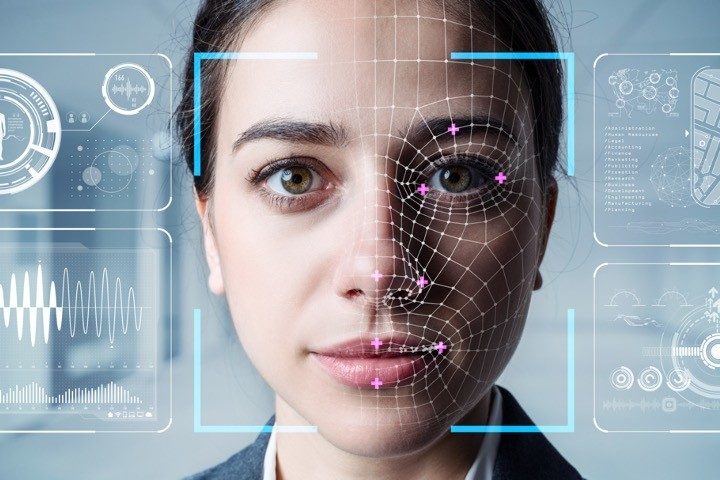
Following the Islamist bombings that shook the south-central Indian city of Hyderabad in 2013, officials scrambled to install 5,000 CCTV cameras to enhance security. Today, in 2022, there are almost 700,000 of these cameras in the city and its vicinity.
To gain an inkling of Hyderabad’s surveillance apparatus, one only need look at the Command and Control Center in the posh Banjara Hills neighborhood. This 20-story tower is a newer substitute for a campus where a multitude of officers already had access to 24-hour, real-time CCTV and cellphone tower data that geolocates reported crimes. Such technology activates any available camera in the surroundings, reveals a photographic database of criminals, and can pair images with facial recognition software to scrutinize CCTV footage for known criminals in the area.
Earlier this year, during an investigation into the spread of artificial intelligence (AI) tools used by law enforcement globally, the Associated Press was privy to these aforesaid technologies.
According to Police Commissioner C.V. Anand, the new command center, which was launched in August, facilitates technology use beyond the scope of law enforcement and across government departments. The project cost $75 million, Mahender Reddy, director general of the Telangana State Police, revealed.
Indeed, today’s Indian police rely on technology not only to crack murders or robberies. Rather, technology is used to monitor people who breach Covid-19 mask mandates and even traffic rules, as in the case of Hyderabad, where local police use mobile applications to issue traffic fines and snap shots of people violating mask mandates.
Police officers in the city can use an application called TSCOP on their smartphones and tablets that contains facial recognition scanning features. This application also connects almost all police officers in the city to an array of government and emergency services.
The Union Civil Aviation Ministry reportedly plans to start the full-fledged rollout of its facial recognition-based digital processing of flyers in a project known as the Digi Yatra project. Digi Yatra refers to a single-token, biometric-based flyer processing platform that is presently in beta testing at the airports of Delhi and Bengaluru.
Based on Anand’s assurance, photographs of traffic offenders and mask-mandate violators are preserved only long enough to be sure they are not required in court before being erased. Anand was stunned that any law-abiding citizen would oppose such surveillance.
“If we need to control crime, we need to have surveillance,” he said, admitting that Hyderabad has spent hundreds of millions of dollars on patrol vehicles, CCTV cameras, facial recognition and geo-tracking applications, and hundreds of facial recognition cameras, among other technologies.
As a result, the state could attract more private and foreign investment, he said, such as Apple’s development center that was unveiled in 2016 and a key Microsoft data center announced in March.
“When these companies decide to invest in a city, they first look at the law-and-order situation,” Anand said, linking technology to a swift reduction in crime.
For instance, he claimed that mugging for jewelry nose-dived from 1,033 incidents annually to fewer than 50 cases a year after the installation of cameras and other technologies.
Also, India’s police are one of the most understaffed in the world, with just 144 police officers for every 100,000 citizens, juxtaposed with 318 officers per 100,000 citizens in the European Union, according to 2019 figures.
Hyderabad’s trajectory is in sync with the country’s technological vision as a whole. In 2019, India’s National Crime Records Bureau (NCRB) announced its blueprint to construct what could potentially be among the world’s largest facial recognition systems, known as the National Automated Facial Recognition System. This system would enable a centralized database for police forces across the country’s 28 states. Capitalizing on previous government projects, Prime Minister Narendra Modi and his Bharatiya Janata Party (BJP) have leveraged on the rise of surveillance technologies since assuming power in 2014. Modi’s Digital India campaign, for example, plans to revamp India’s digital infrastructure so as to use information technology to govern.
Since then, the government has advocated for “smart policing” via drones, AI-enabled CCTV cameras, and facial recognition. Notably, Modi’s BJP is not the lone wolf in this technological endeavor. Instead, his project has gained support across the political spectrum and penetrated into states across India, said Apar Gupta, executive director of the New Delhi-based Internet Freedom Foundation.
In July 2019, the NCRB convened a conference for nearly 80 potential bidders. Based on a government document inviting companies to bid for the facial recognition project, the authorities would use the technology to identify people — including criminals, missing children, and the dead — by comparing their images with a database of images.
This database will tap into images from current records of prisoners, photographs in passports, and “any other image database” within any institution or body.
Facial recognition identifies conspicuous points on an individual’s face and constructs a unique map of the face, just as a fingerprint is unique and not replicable. The system is supposed to facilitate investigations utilizing images from CCTV cameras, handheld mobile devices used by security forces, and even photographs from newspapers, among other sources.
Interestingly enough, there was no discussion in Parliament on how the system would work back when the government first announced its plan in 2019, nor the safeguards it will be subject to or data privacy concerns.
Bids will be considered only from companies that, besides other criteria, have a yearly turnover of at least 1 billion rupees for the last three years; have installed at least three facial recognition systems with a million-strong database for law enforcement agencies globally; and qualify for technical standards established by the United States National Institute of Science and Technology.
Yet such conditions to qualify for the bid automatically exclude home-grown businesses such as India-based Staqu Technologies. The latter had helped digitize records and already set up searchable databases for eight police forces in India by the time the government bid was announced in 2019.
Atul Rai, the co-founder and chief executive of Staqu, told Indian media outlets that foreign software might not be set up for low resolution CCTV images or the different variations of Indian faces.
At least a dozen foreign surveillance companies already function in India, including CP Plus, Honeywell International, Bosch Security Systems, and Dahua. The Internet Freedom Foundation’s Gupta admitted that having a foreign company gather and maintain sensitive biometric data of India is “a threat to national security.”
In light of data privacy concerns, the Bombay High Court ruled in 2019 that the authorities could not justify the infringement of citizens’ privacy merely on the grounds of national security. Government agencies first have to determine if phone tapping or any other privacy-violating technology is essential and proportionate in a democratic society, then apply for permission. Only after approval is obtained can agencies carry out surveillance.
Worries about data privacy are not unfounded, as facial recognition technologies have proven to be not entirely leak-proof. Recent revelations about anonymous entities using Israeli spyware to spy on WhatsApp messages of various Indian activists and journalists have increased fears about the lack of privacy protection for Indian citizens.



